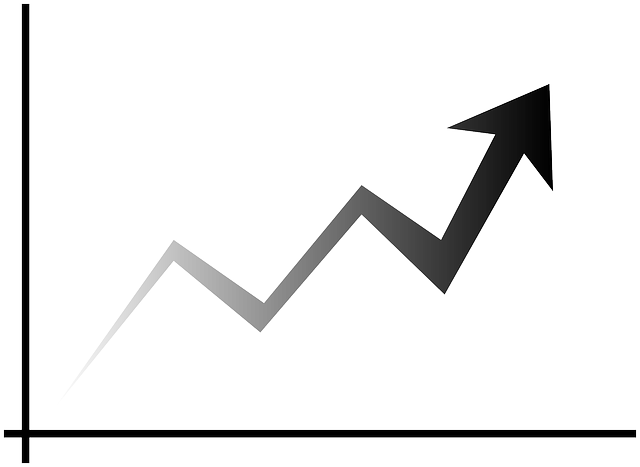Table of Contents
How to and NOT to use Twitter for Trading
Social media makes the world go round these days.
But, did you know that it could actually benefit your trading?
In this post, we’re going to tell you how Twitter can be a useful stock market tool , if used correctly!
One of the greatest obstacles that any trader, professional or novice, faces is the propensity of the human mind to make rash decisions based on emotions and fear and not facts.
The average day trader is aware of trading basics, including factors and technical indicators that are useful in determining when to place trades and when not to.
For example, once a stock starts trading above its 200-day simple moving average (SMA), there’s a fair chance it’s on a bullish uptrend.

Other ingredients include a measure of volatility to determine the size of the position, a risk management component to tell us when to cut losses and what factors should warrant initiating or exiting a position.
These are the bare minimum required for a day trader to trade successfully without allowing intraday decisions to be influenced by emotions and irrational fears.
I cannot stress this enough: As a trader, you should mainly focus on the things that you can measure and control and less on matters based on fear and emotion.
The current sentiment by many traders is that the inauguration of President-elect Trump on January 20 will crater the market.
Further, the market has been paying a lot of attention to Trump’s tweets.
While the Trump Trade has certainly become the latest addition to Wall Street jargon, the data we have already gathered suggests that relying solely on Trump’s tweets to make decisions about your trades can be dangerous.
Download a PDF version of this post.
A recent example of Trump directly influencing the markets was his recent tweets (NYSE:TWTR) about the greenback being too strong, made on Jan. 17. Following the tweet, the dollar index plunged to its lowest level in more than a month.
PowerShares DB US Dollar Index Bullish Fund (UUP) 5-Day Returns
But, then it went on and fully recovered in just a single trading session.
The way the market as a whole—as well as different sectors of the market—has behaved since Trump’s elections also seems to suggest that any movement by the market after his inauguration might be ephemeral. The Dow was expected to perform well after Trump’s victory due to his pledges about increasing infrastructure spending while the tech-heavy Nasdaq was expected to be on the short end of the stick, because Silicon Valley was hugely pro-Democrat, and Trump even verbally sparred with Amazon (NASDAQ:AMZN) chief Jeff Bezos.
True to word, the Dow Jones did rally strongly, while the Nasdaq lost some ground immediately after Trump’s election. But, soon after, the Nasdaq put up a strong rally to fully recover and then some. The Nasdaq Composite Index (COMP) is now up a healthy 3.2% in the year-to-date and is currently hovering around an all-time high. Traders who went short on the Nasdaq on longer timeframes are clearly out of the money. The Trump rally has been all-round favorable to the markets, including the bond market, which has been generally defying bearish expectations.
If the market is actually going to fall apart after the inauguration, the price will first have to break beneath the 21-day exponential moving average and the 50-day SMA. These are easy-to-follow momentum rules that any day trader can identify instead of focusing so much on Trump’s tweets or things like congressional hearings.
How to use Twitter in Trading
That said, using Twitter correctly in trading is a proven way to make winning calls.
Twitter is a key source of information and financial analysts, traders and other market professionals are increasingly using it as a tool to help them make critical decisions.
Some firms now use Twitter for sentiment analytics and to decipher wisdom of the crowds, which is a pretty valid way to make trading decisions after this study found that crowdsourced stock opinions beat those by analysts.
Twitter’s usefulness as a trading tool is not only limited to real-time fast-moving news that day traders typically crave, but also for traders with longer timeframes to identify things like what’s driving a company’s sales and earnings.
A 2012 study by researchers at Yahoo! and UC Riverside concluded that analyzing Tweets about share prices can significantly improve stock trading strategies.
The study looked at several variables such as tweet volume, hashtags about specific companies or people, and using the dollar sign ($) and ticker symbols of stocks to denote individual stocks on Twitter.
Other factors that the study considered include the general mention of a company and/or its products and financial position as well as well as retweet activity.
The premise of the study was to look for a correlation between the above variables and share price performance. The study concluded that indeed there’s some predictive value between Twitter activity and share price performance.
According to the study, the correlation was strongest for companies with low debt levels, as well as for stocks with high betas or low floats.
The study stated that in general, companies whose financial performance fluctuated significantly had a high correlation between Twitter mentions and trading volume, indicating an opportunity to trade on volatility, invest in the stock, or go short to profit from a price decline.
Check out how the STT $TWTR Screener Scans for Low Float Stocks!
The rise of the machines
With more than half a billion tweets sent out each day, hedge funds are increasingly using the microblogging platform to gauge investor sentiment and try to profit from either positive or negative movement in stock prices.
One popular strategy employed by these firms involves hunting for tweets with market-moving potential while another entails eliminating all but five of the most important tweets about a company.
For individual investors, there are data-mining resources that can be applied to study tweets and the trading opportunities they offer.
One such tool is Dataminr, a strategic partner for Twitter that has direct access to the company’s firehose.
Dataminr, though has, in the past, come under criticism for allowing law enforcement fusion centers to access news alerts based on tweets.
Twitter recently made it safer to use Dataminr without fear of reprisal, after it limited data access that Dataminr formerly provided to domestic surveillance hubs.
Another data-mining resource that’s good for individual traders is Knowsis, a U.K.-based web intelligence company that extracts information from non-traditional online sources and presents it into actionable output for the capital markets.
But sometimes simply following companies on their Twitter accounts is enough to glean valuable information.
Stocks of companies have been known to jump more than 5 percent the day after a company tweets valuable nuggets such as sales or earnings increases.
Public sentiment will continue being an important short-term driver of asset prices, and using Twitter to make trade decisions can level the playing field between large hedge funds and the ”little guy.”
But ultimately, it’s critical that a trader understands that Twitter news feeds reflect nothing more than market sentiment, which may or may not affect stock price movement.
Following momentum rules will always remain the most fundamentally sound trading strategy.
For traders looking to play Trump’s inauguration on E-Mini S&P 500 futures (Es), it’s important to remember that higher timeframe moving averages are all pointing north, and it will take quite a lot to bring about a complete reversal.
It’s therefore important to avoid being bearish for too long.
So, Where do you start?
If you’re new to trading, we’ve got you covered! This is how you can get started.
While you’re here…
Try StocksToTrade for 7 Full Days for just $7.00! StocksToTrade was built by traders for traders. Cut the amount of time, stress, and anxiety you experience behind the keyboard and only deal with the handful of real trade opportunities daily. Find the stocks that matter!

